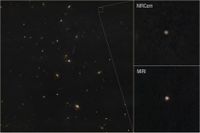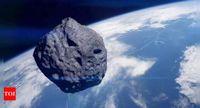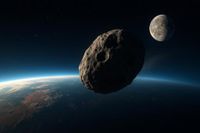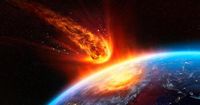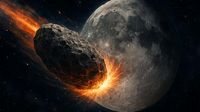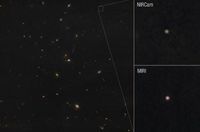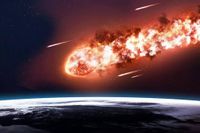In early 2024, asteroid 2024 YR4 caused a stir among astronomers and the public alike when it was discovered to have a potential risk of impacting Earth. Initially calculated to have a 1-in-83 chance of striking our planet in 2032, the asteroid quickly became a focal point for scientists worldwide. However, recent observations have not only cleared the asteroid of any immediate threat to Earth but have also provided valuable insights into its composition and behavior.
Discovered on December 27, 2024, by the Asteroid Terrestrial-impact Last Alert System (ATLAS), 2024 YR4 was initially thought to pose a significant risk. By January 29, 2025, the International Asteroid Warning Network (IAWN) issued its first-ever alert regarding the asteroid, which was assigned a Torino scale rating of 3 out of 10, indicating a noteworthy potential threat. The asteroid was estimated to measure between 40 and 90 meters in diameter, roughly the size of a 15-story building.
As astronomers continued to monitor its trajectory, the perceived threat diminished significantly. By late February 2025, the probability of a collision with Earth had dropped to near zero, leaving scientists to focus on the asteroid's characteristics rather than its danger. The James Webb Space Telescope (JWST) played a crucial role in this process, capturing detailed observations of 2024 YR4 using its Near-Infrared Camera (NIRCam) and Mid-Infrared Instrument (MIRI).
In March 2025, JWST's observations confirmed that 2024 YR4 is approximately 200 feet (60 meters) in diameter. According to planetary scientist Andy Rivkin from Johns Hopkins University, the asteroid's surface is rough and fragmented, dominated by rocks that are fist-sized or larger. This unique surface texture affects how the asteroid absorbs heat during the day and radiates it at night, which is different from larger asteroids that typically have smoother, insulating surfaces.
While the threat to Earth has been virtually eliminated, there remains a slight chance that 2024 YR4 could impact the Moon. Current estimates suggest a 2% probability of a lunar collision on December 22, 2032, which is an increase from earlier predictions of 1.7%. If the asteroid were to collide with the Moon, scientists predict that the impact could create a large crater and generate new meteoroids, potentially posing risks to human space infrastructure and future lunar missions.
The potential impact is estimated to be 500 times more powerful than the atomic bomb dropped on Hiroshima in 1945, raising concerns about the formation of a particle cloud that could affect operations in the Earth-Moon system. This rare event, which could occur once every thousand years, presents a unique opportunity for scientists to observe a significant lunar impact in real time from Earth.
As the asteroid continues its journey, it will disappear from view until its next close approach in 2028. The JWST is scheduled to conduct further observations in May 2025, which will help refine trajectory predictions and impact possibilities. Meanwhile, researchers from the University of Helsinki have been actively tracking the asteroid's position and motion using the 2.5-meter Nordic Optical Telescope in La Palma, Canary Islands.
Throughout this period, the planetary defense community has emphasized the importance of studying near-Earth objects like 2024 YR4. Rivkin noted that understanding such asteroids is invaluable for planetary defense, as it allows scientists to refine their strategies for potential future threats, including deflection or disruption techniques.
The ongoing monitoring efforts reflect a broader commitment to ensuring the safety of our planet from cosmic threats. With more telescopes coming online and data from missions like NASA's DART still being processed, the scientific community is better equipped than ever to address the challenges posed by near-Earth objects.
In summary, while asteroid 2024 YR4 initially sparked fears of a catastrophic impact, it has instead provided valuable data that enhances our understanding of asteroids and their potential risks. As scientists continue to study this and similar objects, the hope is to safeguard our planet and ensure a peaceful future free from devastating asteroid impacts.
